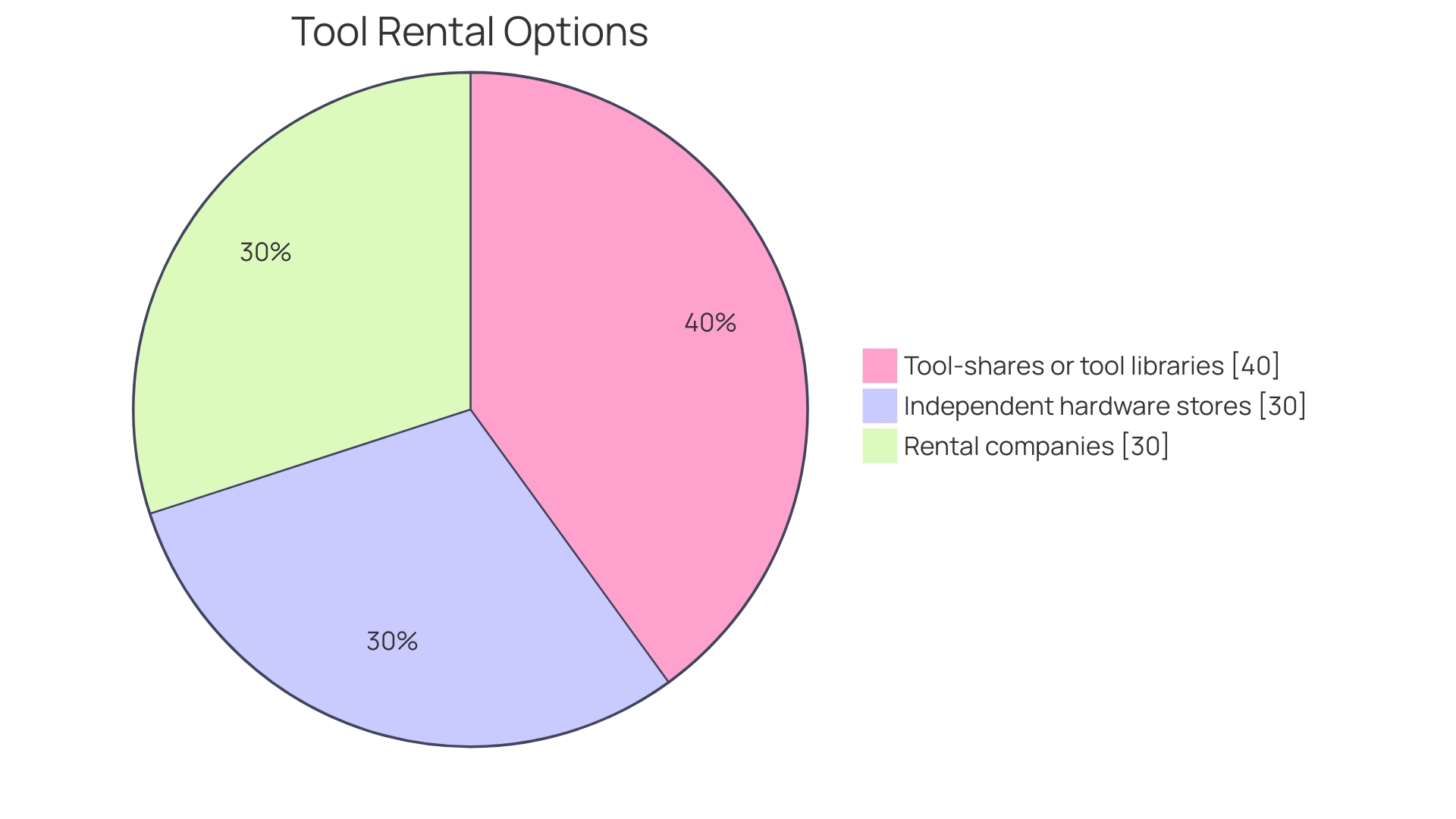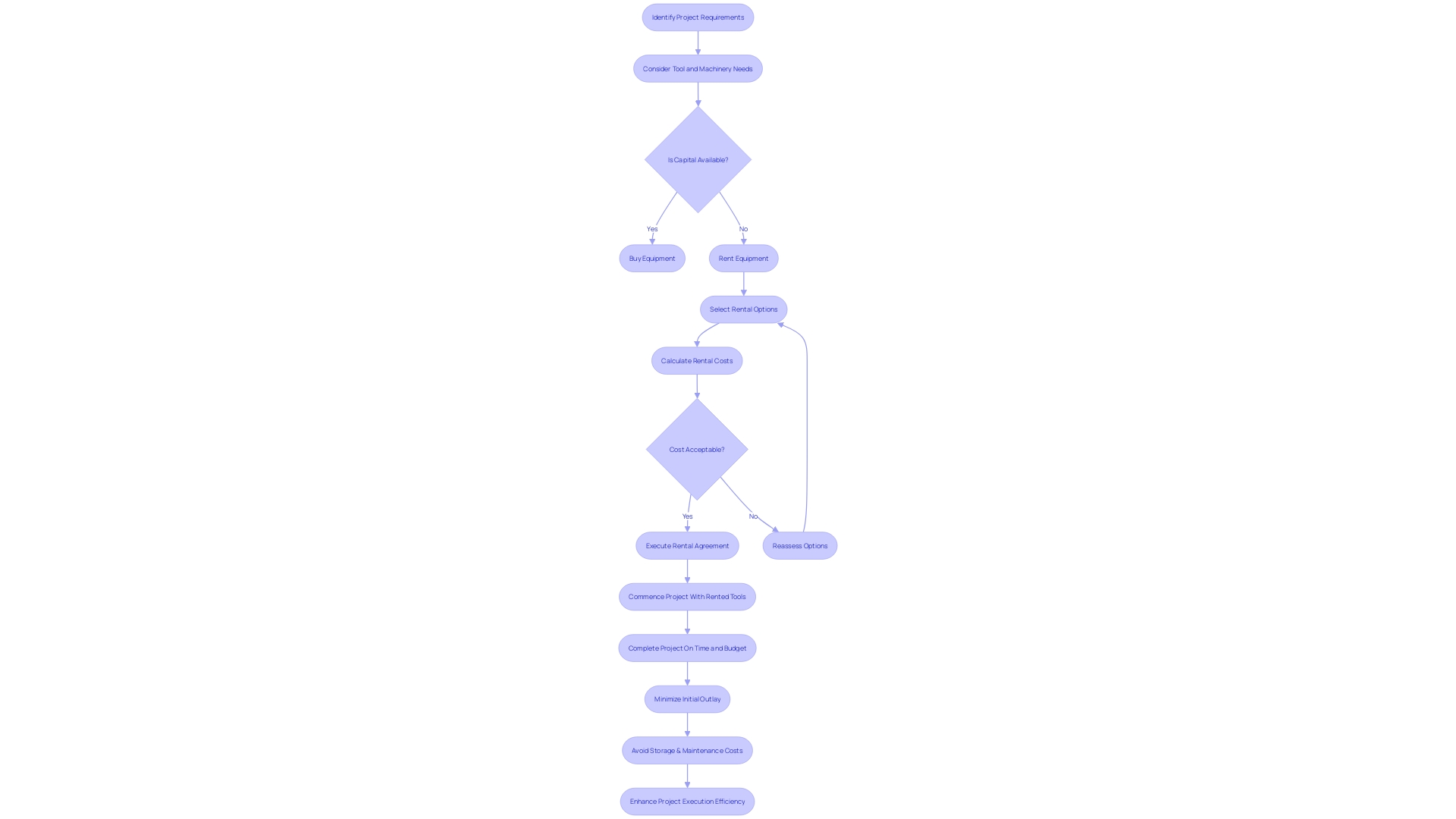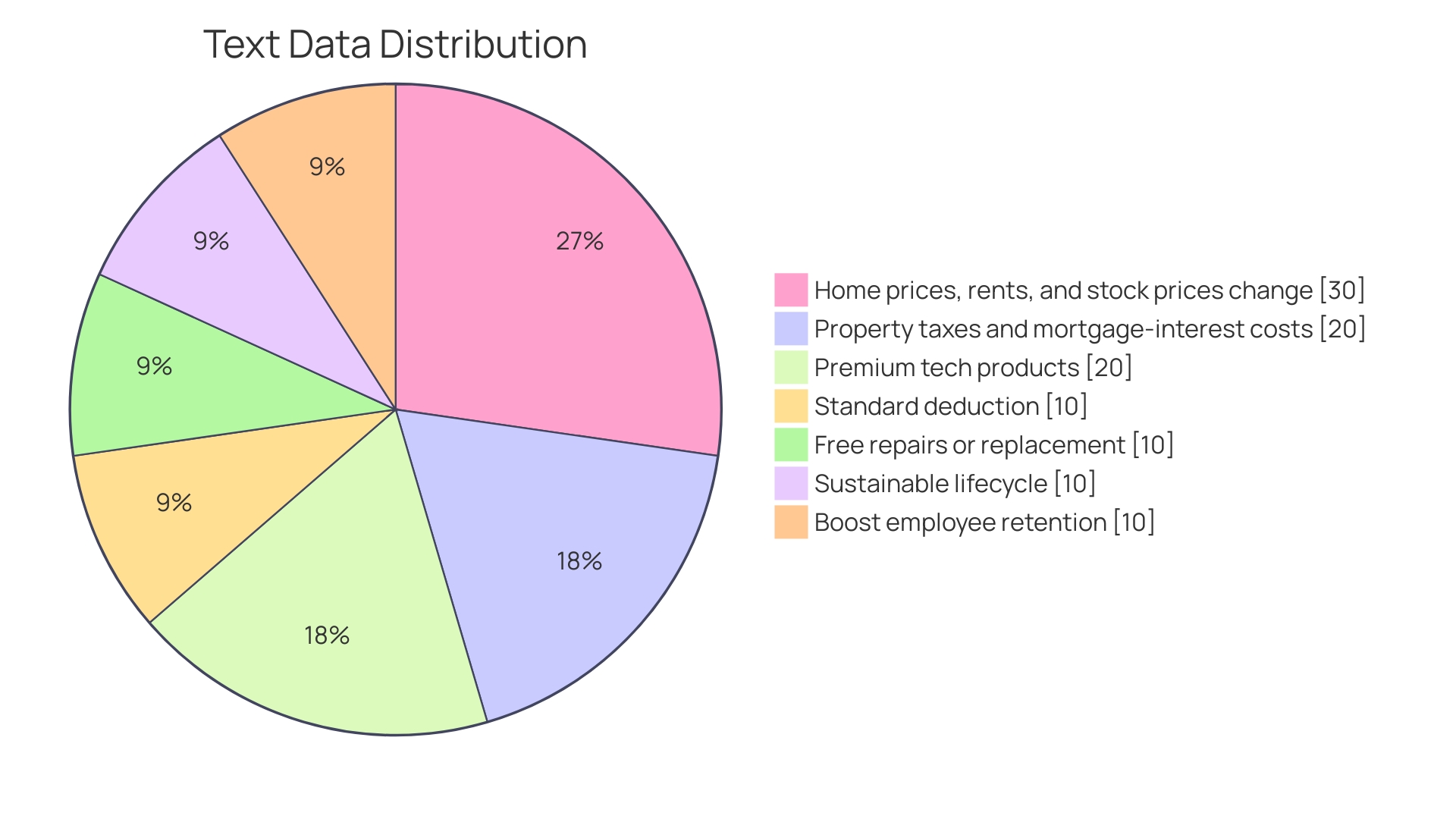Introduction
Tool rentals offer a cost-effective and sustainable solution for accessing specialized equipment and machinery. Whether for construction, landscaping, or other specialized tasks, renting tools can significantly reduce the financial burden compared to purchasing. Rental services provide both professional-grade and basic versions of equipment, allowing customers to choose the best fit for their project's requirements and budget.
Additionally, renting tools offers logistical advantages such as flexibility and convenience, as rental companies often provide delivery and collection services. Furthermore, rental services promote sustainability by minimizing waste and supporting a more sustainable approach to raw material consumption. In this article, we will explore the benefits of tool rentals, including cost savings, access to specialized equipment, reduced maintenance and storage needs, flexibility and scalability, and environmental benefits.
We will also examine real-world case studies and examples that highlight the game-changing advantages of tool rentals in various industries.
What are Tool Rentals?
Tool rental services are a cost-effective way to access a variety of specialized tools and machinery for temporary needs. Whether for construction, landscaping, or another specialized task, renting equipment from rental companies can dramatically reduce the financial burden compared to outright purchasing. Rental services offer both high-end professional-grade and more basic versions of equipment, allowing customers to select the best fit for their project's requirements and budget.
For instance, companies like Rivian, focusing on electric vehicles, need to maintain agility and sustainability throughout their global operations, including tool and machinery utilization. The use of tool rentals fits into their ethos by minimizing waste and supporting a more sustainable raw material consumption.
In addition to traditional equipment rental companies, tool-shares and tool libraries present an alternative, community-based model where individuals can borrow tools free of charge or at nominal rates. Such communal services are beneficial for basic tools and large equipment, emphasizing affordability and accessibility. On average, renting a basic power tool might cost between $30 to $50 per day, providing significant savings over procurement costs.
Beyond the cost savings, there are also logistical advantages to consider. With operations spread across the country, companies benefit from the flexibility of renting tools locally, as needed. For example, dedicated rental companies such as Sunbelt Rentals with numerous locations nationwide can offer delivery and collection services, adding convenience to the rental process.
Moreover, local, independent hardware stores often feature rental services with a more personalized customer experience and knowledgeable staff. Notably, even automotive chains like O'Reilly Auto Parts loan out specialized tools with the purchase of car parts, blending retail with rental services.
Rental costs are influenced by several factors, including the type and quality of the item, the duration of the rental, and local market conditions. However, regardless of location or project scale, tool rentals serve as a strategic solution for managing project expenses, enhancing workflow efficiency, and contributing to sustainable practices.
Maximizing Efficiency for Your Projects
Efficiency is paramount in any role that relies on tools and machines, particularly in construction. By tapping into tool rentals, project managers can keep their projects progressing smoothly while managing costs. It's like how Tipteh, an industrial automation specialist, optimized their engineering process using real 3D views to streamline design iterations, avoiding extra costs and accelerating development.
Similarly, Rivian, an eco-conscious EV manufacturer, leverages sustainable practices to minimize waste and enhance their production workflows across the globe.
In the construction industry, a Construction Manager (CM) orchestrates a project's multiple facets to ensure it unfolds without a hitch. These industry leaders grapple with completing projects within budget and on schedule, often facing 69% odds against a smooth project closeout due to quality assurance hiccups. Renting tools instead of buying allows CMS to operate more flexibly, akin to pay-per-use financing that scales expenses with usage, sharpening business foresight and locking in profitability from the very first utilization of technology.
Understanding the importance of bidding in tool rentals can be beneficial too, much like having a keen eye for market trends is to the procurement process—assessing offers becomes straightforward against this backdrop. Embracing tools like EquipmentShare's T3, which soared with 32 new branches in 2022, can promote productivity, bolster collaboration, and supercharge construction efficiency across the board.
Renting tools and machinery isn't merely a cost-cutting tactic; it's a strategic move that empowers businesses with flexibility, encourages innovation, and, as shown in collaborative projects like the ones at Obayashi JV, can streamline processes, reduce downtime, and facilitate a smoother drive to project completion.

Cost Savings
In the realm of project management, the prospect of tool and machinery rentals comes as a fiscal boon, particularly for contractors operating under monetary constraints. This approach allows for the streamlining of resources without the hefty price tag associated with outright purchases. A rental paradigm ensures that only crucial expenses are prioritized, yielding significant savings and circumventing costs catalyzed by storage, maintenance, or periodic repairs.
Mansur's assessment corroborates the economic viability of renting tools, noting that essential power tools can be leased approximately at $30 to $50 daily. This model is pivotal for minimizing initial outlay while addressing the needs of the project with adaptability. Moreover, independent hardware stores and rental companies like Sunbelt Rentals present a spectrum of options, purveying both convenience and a smorgasbord of tools tailored to project requirements.
Such a strategic maneuver is exemplified by the transformation within Somerset Academies of Texas and AT&T, where convoluted and outdated systems galvanized a shift towards integration and streamlined processes. Similarly, Delivery Hero's IT team exemplified problem-solving by revamping its account recovery process, hence enhancing overall productivity. This operational efficiency mirrors the advantages inherent to tool rental, which eschews post-purchase responsibilities and invariably contributes to a more nimble, cost-effective project execution.

Access to Specialized Equipment
For construction projects that demand unique or highly specialized equipment, going the purchase route may be a financial burden—or worse, a pointless investment for one-time use. Renting these specific tools, however, opens up a spectrum of possibilities. Take the case of Tipteh, an industrial automation specialist.
They needed a 3D visualization tool that allowed for detail-rich collaboration on designs. Renting offered them the flexibility and efficiency required for their complex engineering processes, without incurring unnecessary costs.
Similarly, in advanced manufacturing and assembly, as discussed in an Ergonomics journal article, tools like augmented reality head-mounted display modules help manage workflows and troubleshoot remotely, enhancing productivity. Renting such cutting-edge technology is crucial for industries, including shipbuilding, where it's employed in projects like the Australian Navy Hunter Class Frigate Program to improve workforce skills and efficiency.
While the costs of renting can vary—typically, a basic power tool might cost between $30 and $50 per day—the scale tips in favor of renting when considering the expenses of ownership and the potential tech updates. Jeff Yoders, an award-winning journalist, points out that despite market fluctuations and talks of recessions, the opportunity cost of awaiting better purchasing conditions often doesn't justify the delay in acquiring necessary, productivity-boosting tools.
Finally, whether you opt for a local hardware store renowned for its customer service and knowledgeable staff, or a major rental company with a wide inventory and services like Sunbelt Rentals, the convenience and cost-effectiveness of renting specialized equipment can't be overstated. Tailoring tool and machinery choices to the task at hand, without the long-term commitment, remains an astute strategy for managing sophisticated and varied construction projects.
Reduced Maintenance and Storage Needs
Renting tools has revolutionized the way project managers handle their equipment needs. Instead of allocating resources for the upkeep and storage of tools, one can instead rely on a rental company to bear the burdens of maintenance and repairs. This shift not only optimizes costs but also streamlines project closeout, a process that 69% of contractors perceive as challenging due to equipment management.
When tools are rented, the end of a project no longer mandates the search for storage solutions, thus decluttering the site and eliminating extraneous storage costs.
Rental companies understand the pivotal role of reliability and integration in today's dynamic environment, emphasizing quality to withstand extreme conditions and the necessity for seamless communication with internal IT systems, as highlighted by significant players like Kubota. This dedicated focus on reliability has been linked to a marked decrease in error rates in various assembly stations, showcasing the tangible benefits of opting for rented equipment over purchasing.
Recognizing the varying requirements and budget constraints of different projects, the rental market provides flexibility, offering a spectrum from basic to professional-grade equipment. Cost, naturally, is influenced by such factors, with prices potentially ranging from $30 to $50 per day for basic power tools. This pricing structure caters to the diverse needs of project managers, from short-term rentals for specific tasks to longer durations for extensive projects.
The strategy of renting over traditional procurement is further supported by the trend of leveraging storage units for e-commerce operations, underscoring the importance of cost-effective solutions for space management. With a problem-solving focus, project managers can leverage these insights to enhance efficiency, reduce costs, and ensure project success.

Flexibility and Scalability
- The emerging flexibility and scalability offered by tool rentals are revolutionizing how project managers tackle the dynamic nature of construction. These benefits align seamlessly with the evolving needs and unexpected changes in project scopes, allowing an efficient and swift adaptation by providing the exact equipment required at any stage without the additional costs of ownership.
- Rivian's environmentally-conscious operational mandate is mirrored in their utilization of tool rental services, ensuring that their expansive operations maintain sustainable use practices. By renting, rather than purchasing, tools and machinery, Rivian actively minimizes waste and supports their goal of achieving net-zero emissions by 2040.
- Similarly, companies that have recognized the burden of unused resources, like AT&T, are beginning to shift their approach from owning an extensive tool inventory burdened by maintenance and obsolescence, to a nimbler model where tools are rented on demand. This shift also echoes the frustration with outdated systems and policies, inspiring more streamlined and flexible operational methods.
- Internationally, introducing innovative features like Amazon EC2 Capacity Blocks for machine learning tasks presents a parallel in the IT field, where reserving computational capacity mirrors the construction industry's method of tool reservation – both aiming to provide cost certainty and scalability.
- The decision to rent or purchase tools hinges on assessing project needs, goals, and constraints. The construction industry, attuned to variable market demands and project cycles, increasingly advocates for the rental model, given its direct correlation with improved economic benefits and the efficient maintenance of production processes.
- Statistics support that cooperation and the strategic selection of subcontractors play a pivotal role in today's production environment, emphasizing the importance of adaptive strategies which rental solutions directly cater to. The ability to simulate real production processes and monitor them in real-time highlights the value in flexibility of tool and machinery acquisition that rental offers.
- As project managers navigate the complexities of managing construction projects, the concept of 'pay-as-you-use', as opposed to traditional fixed payments, becomes an appealing financial strategy. It not only aligns with the ebb and flow of project requirements but also allows for more concrete financial forecasting and strategic planning.
Environmental Benefits
Rental tools and machinery offer an eco-friendly approach to construction and landscaping that aligns with the pressing need for environmental sustainability. By choosing to rent instead of purchase, the frequency and volume of tool production decrease, which in turn reduces the consumption of raw materials and the energy spent in manufacturing. Moreover, renting promotes the responsible use of tools since rental companies typically assure routine maintenance and repairs, thereby extending the tools' operational life and diminishing the need for frequent replacements.
This practice not only conserves resources but also mitigates the accumulation of waste, ensuring that discarded tools don't contribute to landfill mass. Tool rental, by its inherent nature, encourages a shared economy, minimizing each individual project's environmental footprint while supporting conservation efforts. Community tool libraries and initiatives, such as those offered in public libraries or neighborhood groups, further illustrate this principle, demonstrating that access to tools doesn't require ownership, and borrowing can indeed eclipse the necessity to buy.
Embracing tool rental is a strategic and impactful decision that benefits project timelines and budgets while making significant strides towards a greener and more sustainable industry.
Case Studies and Examples
Rivian, the innovative electric vehicle manufacturer, shows the effectiveness of tool rentals in boosting productivity while adhering to environmental goals. Seeking net-zero emissions by 2040, Rivian faced the challenge of maintaining sustainable operations across multiple states. Tool rentals played a pivotal role in achieving a faster and more sustainable process, providing the necessary equipment without the burden of ownership, thus reducing waste and resource consumption.
AT&T's story is another compelling case of the strategic use of rented tools. Their evolution from a long-standing organization cluttered with outdated systems to a rejuvenated, agile one was anchored by upgrading to higher-quality rented equipment that seamlessly integrated with internal IT systems. As a result, they saw a significant decrease in the error rate, illustrating the tangible benefits of choosing the right tools.
In Switzerland, La Mobilière leveraged tool rentals to synchronize its cross-functional agile teams working on insurance contract management. By renting specialized tools as needed, they maintained alignment without having to invest heavily in proprietary equipment, supporting an agile operation that adapts quickly to changing requirements.
These instances highlight the game-changing advantages of tool rentals. As noted by John Jantsch in the Duct Tape Marketing Podcast, selecting the ideal tools is critical to a business's success, and renting can provide the flexibility to choose precisely what you need without overcommitting resources. It's a strategy that promotes efficiency, productivity, and sustainability—a triad of benefits that modern companies cannot afford to ignore.
References/Citations
-
Figma's engineering projects exemplify the importance of a lean working team, which allows for swift movement and prompt delivery of impactful outcomes. By focusing on significant, quick wins and a sustainable long-term growth system, they avoid the complexities and high costs associated with running a large-scale device farm. This strategy demonstrates that assessing resource allocation can prevent unnecessary expenses and maintenance burdens.
-
Lex Machina's experience with managing massive amounts of court records underscores the critical nature of robust database management mechanisms. The challenges they faced with database failures and the time-consuming scripting process highlights the necessity for efficient and scalable database solutions to support development, staging, API access, and customer requirements.
-
Last Arrow Manufacturing's decade-plus specialization in metal fabrication showcases the value of expertise in providing low-risk, cost-effective services. Their focus on precision and quality control in a range of materials illustrates the significance of skillful craftsmanship in delivering client satisfaction and maintaining a competitive edge in metalworking.
-
Data Center Knowledge's reflection on the past year and the future outlook for data centers emphasizes the need for professionals to stay abreast of industry developments and anticipate forthcoming challenges. With an aim to establish nine new data centers by 2030, the industry is marked by rapid advancements and professionals must adapt their strategies accordingly.
Conclusion
In conclusion, tool rentals offer a cost-effective and sustainable solution for accessing specialized equipment. Renting tools significantly reduces financial burdens compared to purchasing. Rental services provide a range of equipment options, allowing customers to select the best fit for their project's requirements and budget.
Logistically, renting tools offers convenience and flexibility with delivery and collection services provided. Local hardware stores and major rental companies offer personalized customer experiences, enhancing convenience for customers.
Renting tools provides access to specialized equipment without long-term commitments or high costs. This is particularly beneficial for construction projects that require unique equipment.
Maintenance and storage needs are reduced with rental services. Rental companies handle maintenance and repairs, optimizing costs and streamlining project closeout.
Flexibility and scalability are key advantages of tool rentals. Project managers can easily adjust equipment needs and scale expenses with project requirements, promoting efficient execution and financial planning.
Tool rentals contribute to a more sustainable approach to construction and landscaping. Renting reduces the frequency of tool production, decreasing raw material consumption and energy spent in manufacturing. Routine maintenance extends the tools' operational life, reducing waste.
Real-world case studies, such as Rivian and AT&T, highlight the benefits of tool rentals in boosting productivity, sustainability, and operational efficiency.
In conclusion, tool rentals provide a strategic solution for managing project expenses, enhancing workflow efficiency, and promoting sustainability. By embracing tool rentals, businesses can achieve better outcomes while reducing their environmental impact and promoting efficiency.




